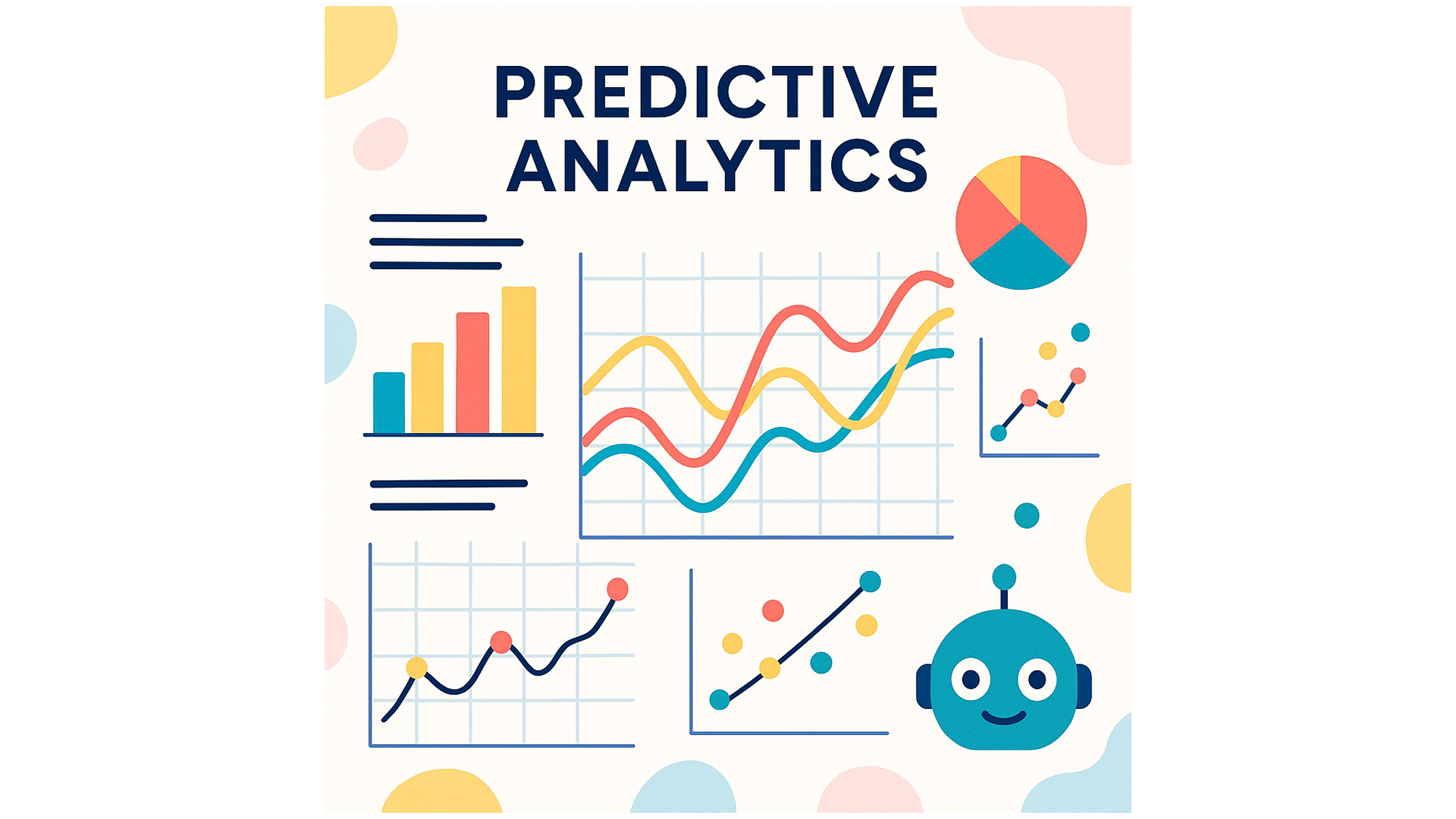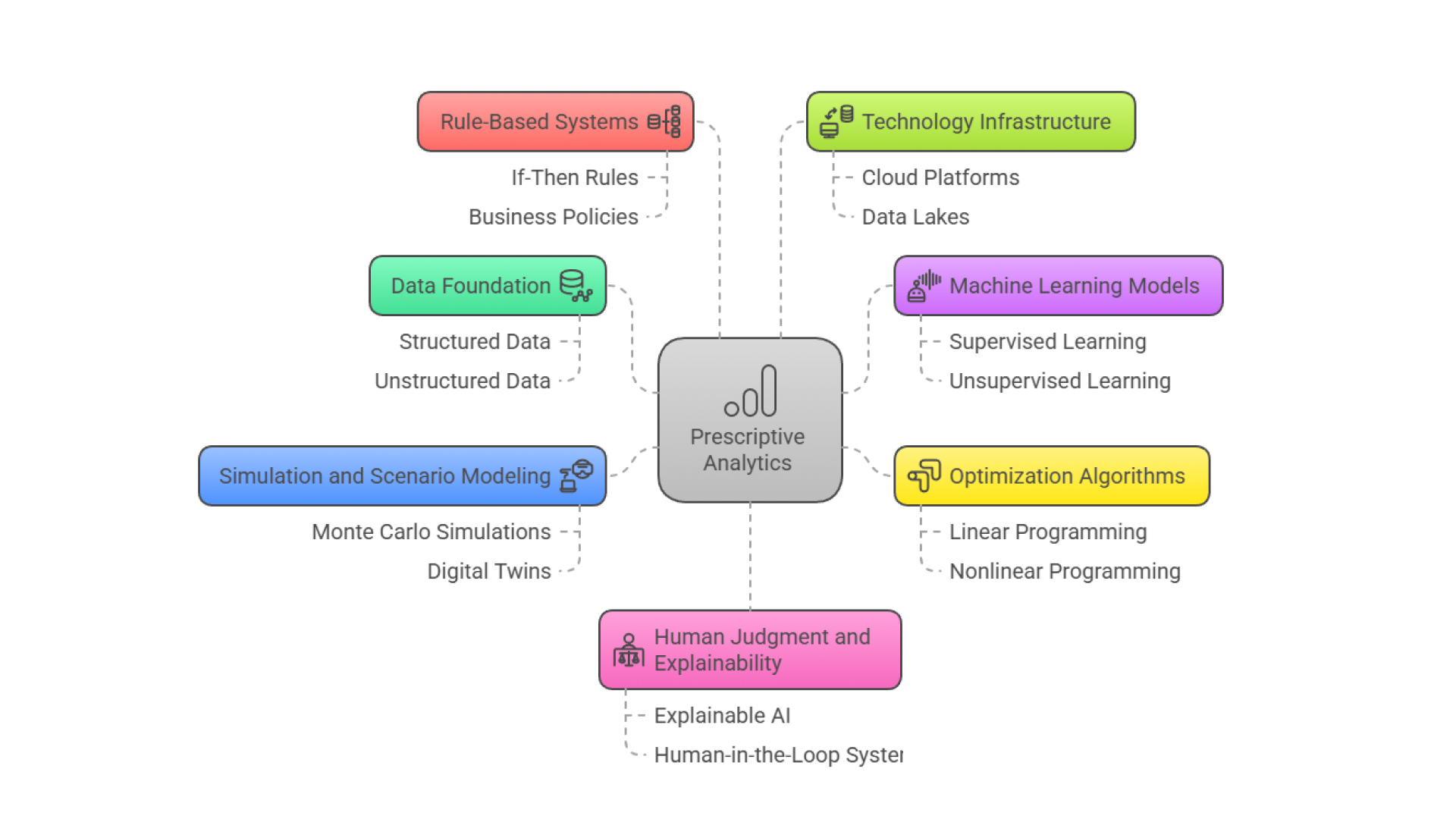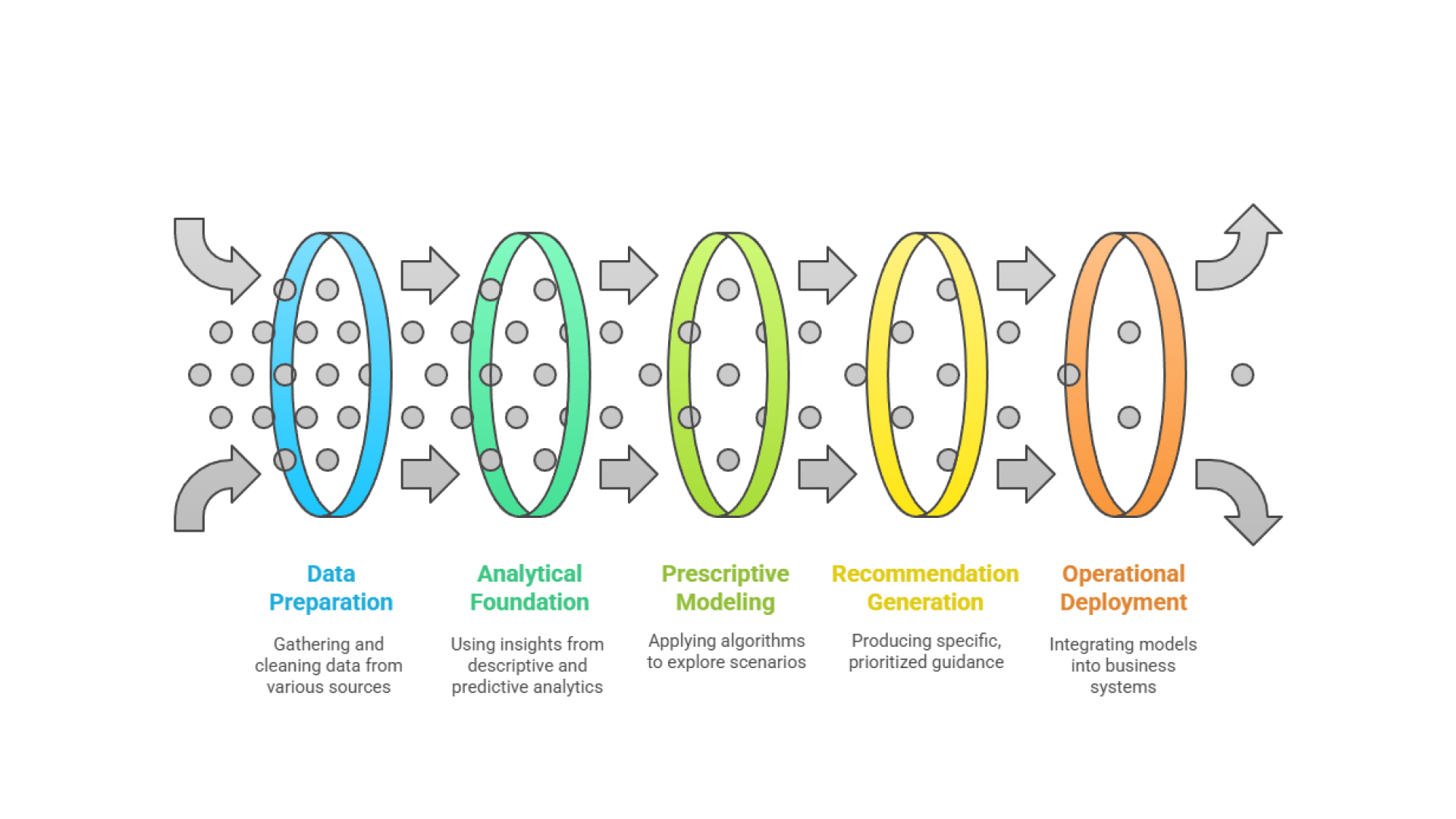What is Prescriptive Analytics?

Team Thinkstack
June 06, 2025
Table of Contents

Prescriptive analytics is the most advanced and actionable form of data analytics. It not only forecasts outcomes but also recommends specific strategies to achieve desired objectives. At its core, prescriptive analytics leverages historical data, real-time data streams, and powerful algorithms to generate optimal recommendations. It draws heavily on machine learning, optimization algorithms, simulation, and rule-based systems.
What sets prescriptive analytics apart is its ability to integrate optimization and simulation techniques to determine the best course of action under given constraints. This makes it especially relevant in high-stakes environments where decisions carry downstream consequences, such as supply chain logistics, financial planning, marketing strategy, and machine learning model deployment.
Prescriptive analytics delivers value through several core benefits:
- Actionable recommendations transform raw insights into clear, data-backed decisions, reducing reliance on intuition or guesswork.
- Operational optimization helps streamline operations from resource allocation to production scheduling for maximum efficiency and cost-effectiveness.
- Risk management detects high-risk events such as fraud or loan defaults, often enabled by embedded anomaly detection algorithms, and recommends appropriate responses to mitigate them.
- Enhanced customer experience enables personalized pricing, targeted offers, and tailored engagement by anticipating customer behavior.
- Strategic decision support uses simulations and “what-if” analysis to support high-stakes decision-making without real-world consequences.
Prescriptive analytics is also particularly valuable for operationalizing machine learning models. In scenarios like hyperparameter tuning, batch size selection, or optimizer configuration, it supports decisions that influence how models learn during backpropagation. By reasoning about the best settings—whether for learning rate, gradient update frequency, or data sampling, it enables systems to optimize performance or minimize risk in a structured, data-driven way, far beyond traditional trial-and-error methods.
Core Components of Prescriptive Analytics

Prescriptive analytics is built on a tightly connected set of components, each essential to turning raw data into clear, actionable decisions.
- Data foundation is critical to prescriptive analytics. Success depends on high-quality, integrated data from structured and unstructured, internal and external sources. Poor data quality undermines results, making validation and governance essential. Historical data reveals trends and trains models. Real-time data enables dynamic, responsive decisions. External data, such as market shifts and competitor behavior, adds strategic context.
- Machine learning models drive the analytical engine of prescriptive systems. These models detect patterns, forecast outcomes, and continuously improve as new data flows in. Supervised learning supports predictive tasks. Unsupervised learning segments data and flags anomalies. Reinforcement learning excels in adaptive, feedback-based scenarios. Deep learning handles complex, high-dimensional inputs like text, images, or sensor streams.
- Optimization algorithms weigh goals, constraints, and trade-offs to recommend the most effective actions. These methods translate insights into decisions that maximize efficiency, reduce cost, or align with strategic objectives. Common techniques include linear and nonlinear programming, heuristics, and stochastic approaches.
- Simulation and scenario modeling allow decisions to be tested in a virtual environment before implementation. Monte Carlo simulations capture uncertainty through repeated sampling, while digital twins mirror real-world systems for safe experimentation. This enables proactive risk assessment, contingency planning, and exploration of complex interdependencies.
- Rule-based systems apply domain knowledge, compliance logic, and operational constraints that machine learning alone may overlook. If-then rules, embedded business policies, and regulatory frameworks ensure decisions align with legal, ethical, and strategic boundaries.
- Technology Infrastructure powers real-time, scalable prescriptive analytics by supporting large-scale data processing and seamless integration. Cloud platforms offer flexible compute resources, while data lakes and warehouses centralize both structured and unstructured data. APIs and integration layers ensure smooth connectivity with business systems, and automated machine learning tools simplify model development. Without this foundation, systems face latency, fragmentation, and limited performance.
- Human Judgment and Explainability are essential to ensure prescriptive analytics remains transparent, ethical, and contextually sound. Explainable AI techniques help users interpret how decisions are made, while human-in-the-loop systems allow experts to validate, refine, or override recommendations. This oversight builds trust and ensures accountability, especially in high-stakes or regulated environments.
How Prescriptive Analytics Work

Objective definition: Prescriptive analytics begins by clearly defining the business problem, decision goal, and constraints. This shapes the entire modeling process and ensures recommendations align with organizational priorities.
Data preparation: High-quality, integrated data is gathered from historical records, real-time streams, and external sources. Preprocessing ensures cleanliness, consistency, and relevance, crucial for reliable outputs.
Analytical foundation: Insights from descriptive and predictive analytics are used as inputs. Past trends and future forecasts help establish baseline expectations and inform the prescriptive layer.
Prescriptive modeling: Machine learning, simulations, and optimization algorithms are applied to explore possible scenarios and outcomes. These models evaluate options based on defined objectives, constraints, and trade-offs.
Recommendation generation: The system produces specific, prioritized guidance and clear actions rather than forecasts. These may target cost savings, risk avoidance, operational efficiency, or strategic growth.
Operational deployment: Refined models are integrated into business systems through APIs, dashboards, or decision engines. This enables real-time or batch delivery of prescriptive outputs.
Execution and oversight: Actions may be automated or reviewed by decision-makers. Continuous monitoring ensures adaptability as new data is ingested and conditions evolve.
Prescriptive vs. Descriptive vs. Predictive Analytics
| Aspect | Descriptive analytics | Predictive analytics | Prescriptive analytics |
|---|---|---|---|
| Primary question | What happened? | What might happen? | What should we do? |
| Goal | Understand past performance and trends. | Forecast future outcomes based on patterns in historical data. | Recommend optimal actions to achieve desired outcomes or avoid risks. |
| Data usage | Analyzes historical data. | Uses historical data to model and predict future events. | Uses historical, real-time, and contextual data to simulate scenarios and suggest actions. |
| Methodologies | Aggregation, reporting, basic statistical analysis. | Statistical modeling, machine learning, and forecasting techniques. | Optimization algorithms, simulations, machine learning, and rule-based systems. |
| Output | Reports, dashboards, trend summaries. | Probabilistic forecasts and predictions. | Actionable recommendations or strategies for decision-making. |
| Decision role | Describes what has occurred to support understanding. | Informs possible outcomes to support planning. | Directly supports or automates decision-making. |
| Technology use | BI tools, SQL, spreadsheets. | Predictive modeling tools, machine learning libraries. | Advanced AI/ML platforms, optimization engines, simulation software. |
| Human involvement | High—requires human interpretation. | Medium—predictions require judgment to act. | Varies—can support human decisions or automate actions. |
Conclusion
Prescriptive analytics goes beyond simply describing or predicting outcomes; it recommends what to do next. It plays a critical role in turning data into decisions, helping organizations act with clarity and confidence.
While it comes with challenges like data quality, infrastructure demands, and the need for skilled talent, these can be addressed with the right strategy, tools, and processes. When implemented effectively, prescriptive analytics drives better decisions, improves performance, and creates a meaningful edge in today’s data-driven landscape.